Chinese Painting Techniques Inspire Indian Painter
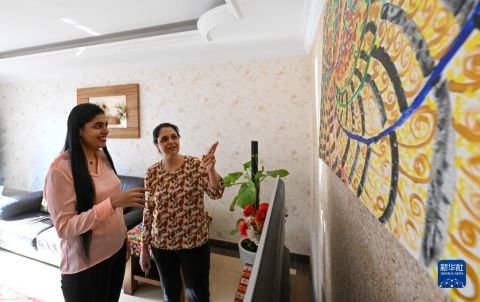 |
| Gurmehar Singh (left) and her mother discuss one of her paintings at home, in Tianjin. [Xinhua/Sun Fanyue] |
Gurmehar Singh, an artist from India, has been living in China for 24 years. Not surprisingly, the years she has spent in China have deeply influenced the style of her paintings. She includes Chinese elements in her paintings, which express her love for both China and the Chinese arts.
Singh moved to China, from northern India, with her parents in 1999. She was 5 at the time. Since then, she has lived and studied in Chinese cities, including Beijing and Tianjin. Now, her family lives in Jinnan District, in North China's Tianjin Municipality.
"Both China and India have long and profound histories. I enjoy my life in China. My family celebrates traditional Chinese festivals, and observes traditional Chinese customs. For example, we post Spring Festival couplets when we celebrate Chinese New Year," Singh says.
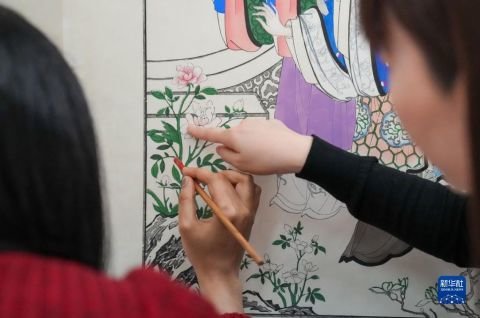 |
| Gurmehar Singh (left) works on a Yangliuqing woodblock print, under the instruction of Wang Yan. [Xinhua/Li Ran] |
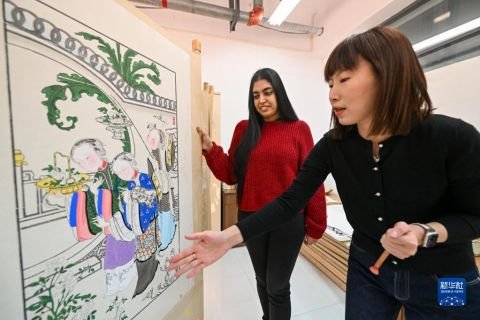 |
| Gurmehar Singh learns from artist Wang Yan (right) how to create Yangliuqing woodblock prints, at Yangliuqing Woodblock Prints Museum, in Tianjin. [Xinhua/Sun Fanyue] |
She has been interested in painting since she was a child. She has recorded Chinese architecture, customs and myths, and the various moments of her life, through her paintings.
Living in China has inspired Singh's paintings, and her painting career has developed well in the country. She now runs her own art studio, and she teaches painting, in Tianjin.
The style of her paintings has been deeply influenced by her experiences in China, and by her interest in traditional Chinese arts and culture.
 |
| Gurmehar Singh (front) creates a Yangliuqing woodblock print, under the instruction of artist Liu Jie, at Yangliuqing Woodblock Prints Museum, in Tianjin. [Xinhua/Sun Fanyue] |
Her signature style combines basic shapes and lines with experimental color combinations, creating beautiful and creative patterns.
Singh has participated in various international painting exhibitions in China. For example, her paintings were exhibited during the ASEAN Culture and Art Creation Season (Season III) in November 2022.
More than 200 paintings, by 95 artists from 18 countries, were displayed. The exhibition, themed Connecting the Silk Road, Impression of Hometown, was held at the ASEAN Culture and Art Exchange Center, in Xiamen, in Southeast China's Fujian Province.
As an avid fan of paintings, Singh has visited museums and art galleries in Tianjin, and other Chinese cities, to become familiar with the various techniques of traditional Chinese painting.
She once visited Yangliuqing Woodblock Prints Museum, in Tianjin, and she learned from Chinese artists how to create Yangliuqing woodblock prints.
"In Chinese art, Yangliuqing woodblock prints are very famous. I like the colors, patterns and the unique style. I am very interested in the whole process of creating Yangliuqing woodblock prints," she says.
Yangliuqing woodblock print, which emerged during the late Ming Dynasty (1368-1644), has more than 400 years of history. Yangliuqing, literally meaning "willow is green," is the name of a small town on the outskirts of Tianjin, and that town is said to be the birthplace of the Yangliuqing style of woodblock print.
Wang Yan, a Yangliuqing woodblock print artist, told Singh there are five main steps to creating traditional Yangliuqing woodblock prints. Those steps are: Sketching the lines; carving the woodblock plates; printing with water, ink and pigments; supplementary painting, to create a halo effect, especially around humans' faces; and, framing the woodblock prints.
Wang said Chinese culture, which is inclusive and has a long history, would easily resonate with international artists.
Yangliuqing woodblock prints feature an abundance of themes, which are often inspired by Chinese literature, folk legends and myths. However, the most recognizable themes are usually auspicious symbols for Chinese New Year. The art of Yangliuqing woodblock print in 2006 was among the first elements to be listed as items of China's national intangible cultural heritage.
Singh and her friends from other countries are fans of China's intangible cultural heritage. They often visit inheritors of Chinese intangible cultural heritage, to immerse themselves in the atmosphere of traditional Chinese culture, and to find inspiration for their own creations.
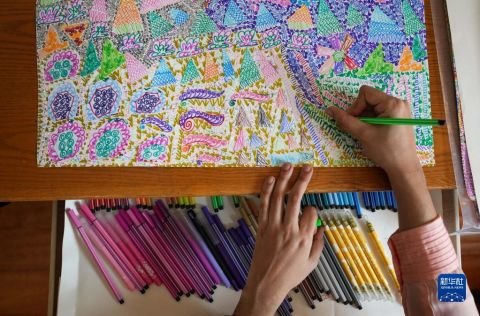 |
| Gurmehar Singh works on a painting at her home, in Tianjin. [Xinhua/Li Ran] |
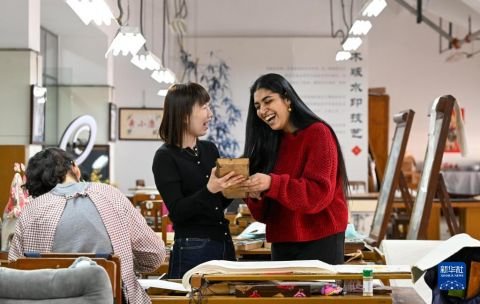 |
| Artist Wang Yan explains the woodblock watermarking technique to Gurmehar Singh (right) at Yangliuqing Woodblock Prints Museum, in Tianjin. [Xinhua/Sun Fanyue] |
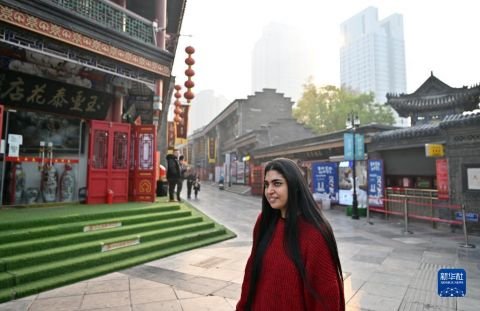 |
| Gurmehar Singh visits a traditional culture street, in Tianjin. [Xinhua/Li Ran] |
(Source: Xinhua/Women of China English Monthly May 2023 issue)
Please understand that womenofchina.cn,a non-profit, information-communication website, cannot reach every writer before using articles and images. For copyright issues, please contact us by emailing: website@womenofchina.cn. The articles published and opinions expressed on this website represent the opinions of writers and are not necessarily shared by womenofchina.cn.?

 京公綱安備 11010102004314號
京公綱安備 11010102004314號